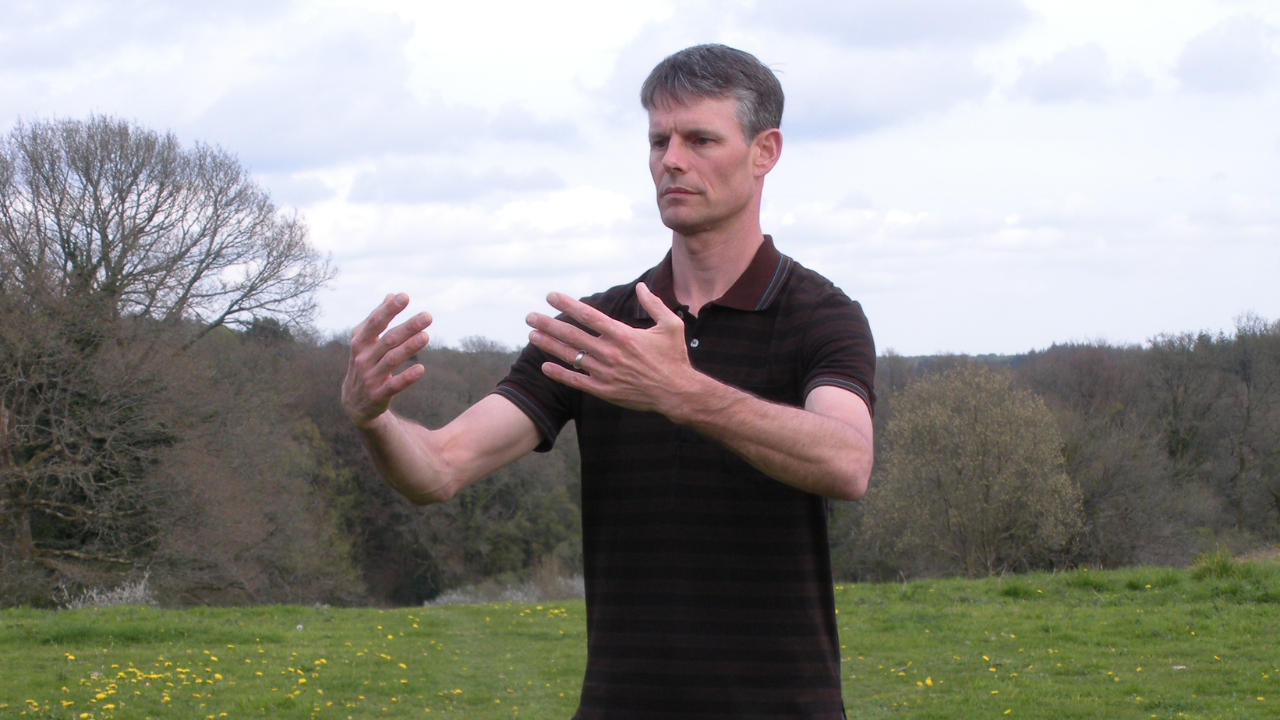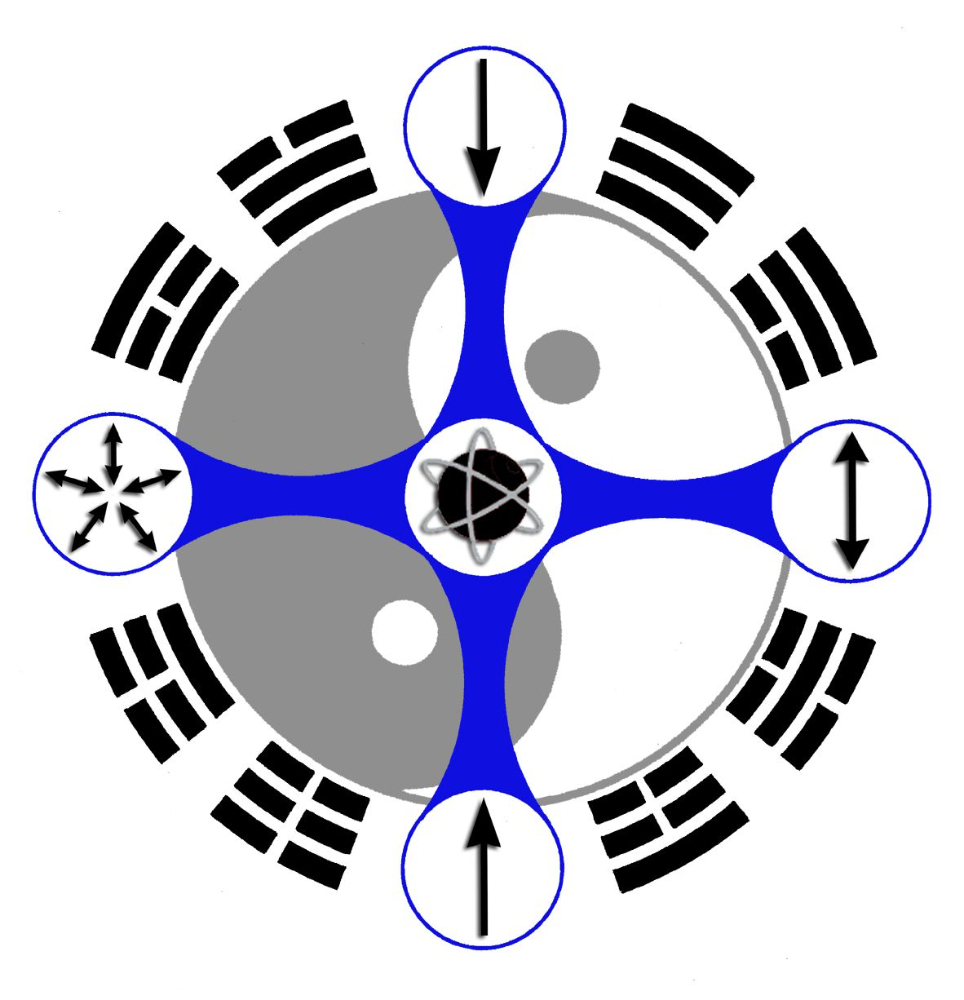Simple Wellness: Creating Internal Space
Jul 24, 2022
By Paul Cavel
Many events in life close people down in some way or another, especially because repetitive, micro-tasks on devices have become standard practice. They can leave your body and mind feeling condensed, hard and tense, especially at the end of the day.
Learning how to make space in your physical body is an excellent tool for reversing the cycle of compounding tension, so you can relax, empty your mind and become present to the here and now — where all healing takes place and the creative force thrives.
Qigong Exercise
In the Water Method, qigong or energy exercises to engage and open the body are initiated in a static posture since it’s much easier to focus while standing still than moving around. Even more advanced internal arts practitioners will find that starting your practice with a standing or sitting posture can help bring your mind to the task at hand, making your moving practices more effective.
Step 1: Good Posture Sets Your Foundation
The classic standing posture is called “hug-a-tree.” First, spend some time checking that all postural alignments are in place in the neutral posture — with arms relaxed at your sides — and you can maintain them as you stand.
Neutral Standing Posture
Once you feel comfortable in the neutral standing qigong posture, bring your hands up to the height of your shoulders and make a ring with your arms as if you are wrapping your arms around a tree.
Spend a few minutes relaxing and letting go of all excess effort. Start with your face and work downward to your shoulders, arms, hands, chest, elbows, belly, tail bone, legs and feet, releasing any tension you encounter to whatever degree is possible for you in the moment. Take your time and move slowly to maintain a sense of easiness with the exercise.
Then, with a sense of the spine rising while the arms remain in posture, release all of your soft tissues, such as the muscles, tendons, ligaments and fascia. Again, work from top down.
If you find that you are tired in mind, body or energy at this point, leave the next set of exercises for another day. Standing qigong alone can be a great method of releasing accumulated tension and bringing your mind to the present moment.
Step 2: Open Your Musculoskeletal Frame
Initially, in the hug-a-tree qigong posture, you will follow the steps below in sequence, one after another. After developing skill in each individual step, you want to train all pairs of opposition (below: steps 1-2, 3-4, 5-6 and 7-8). Eventually, you want to perform all adjustments together simultaneously. This will take some weeks or months of consistent practice.
Adhere to the Rule of Thirds and don’t force or strain your body, mind or energy in any way as you open up the musculoskeletal frame by:
-
Extending the elbows forward, downward and away from each other, while keeping the hands on your left and right channels.
-
Extending the hands and fingers toward each other, while keeping the hands on your left and right channels.
-
Lengthening from the lumbar vertebrae (lower back) and up through the neck to the crown of the head. Be careful not to overstretch or tense the occipital area (where the skull meets the spine)!
-
Sinking the chest down into the belly as you raise the spine.
-
Sinking and dropping the sacrum and tail bone down through the legs and into the feet — without your body lowering in height. Be careful that your knees don’t push forward of your toes!
-
Lifting the body up by opening the back of the knees and thereby taking pressure off the knees. If you do this well, the shin-to-thigh-bone angle will not change and the ankles will open up slightly. You can also open the back of the knees by lifting from the tail bone and keeping the same angle with the leg bones. Whichever method you choose, you want to stretch open the legs and space in the joints.
-
Opening up the feet and allowing the toes to grow out of the feet.
-
Sink your body’s entire energy into the Earth.
Once you complete this sequence of steps, you can slowly open up and stretch each place progressively more, bit by bit. The intent throughout the whole process is to deepen relaxation and thereby increase your ability to let go rather than use force of any kind to expand your musculoskeletal frame.
The longer you stand, the more blood and qi-energy will circulate throughout your body, making it easier to identify any areas that are condensed, contracted or collapsed. As your overall tension releases, you can then systematically stretch open these areas, again bit by bit.
Step 3: Creating Space in Your Practice
Practice the sequence of exercises in the hug-a-tree qi gong posture for a week or more before applying them to your moving arts practice.
First, you must develop the ability to arrive at the end point of all stretches simultaneously (and not sequentially) while standing. That is from the opening of your kwa and spine, your limbs grow out of your body, so the stretches arrive at your extremities (crown of head, fingertips and toes) at the same moment in time.
Until you are familiar with the whole process and can execute and complete all stretches simultaneously, there’s no benefit to adding the techniques to other practices like tai chi and martial arts. In fact, it will downgrade your performance and break your flow.
Remember that rushing and forcing causes the body to contract and shut down — the opposite of what all internal energy arts practice aims to achieve. Relaxing and taking your time will improve circulation of blood and qi flow, creating a positive feedback loop that yields more relaxation, sense of space and peace of mind.
Practice these techniques several times a week for at least a month — more if you need it or experience benefit from doing so.
Join a course — online or in person — to learn how the Water Method can help you overcome physical, energetic, emotional and mental traumas, to become stronger and feel more alive!

